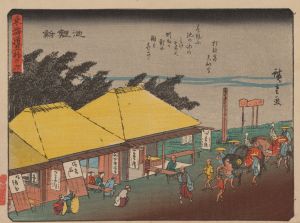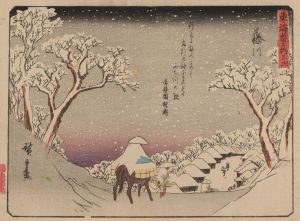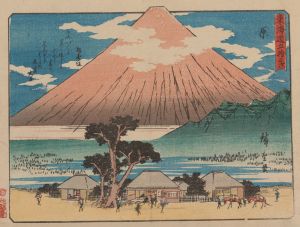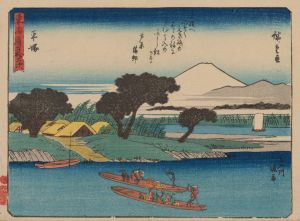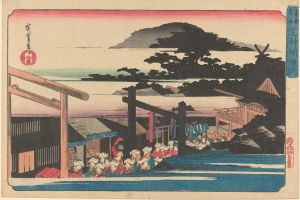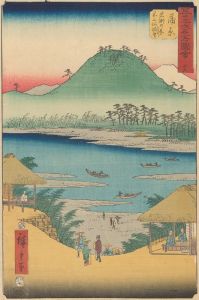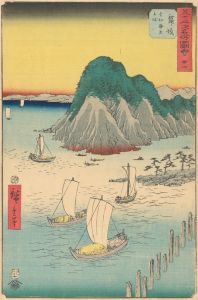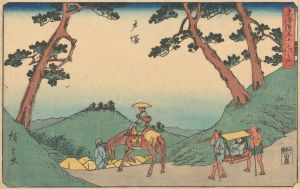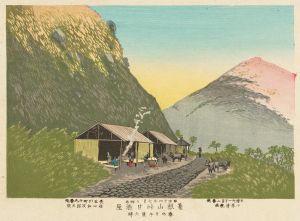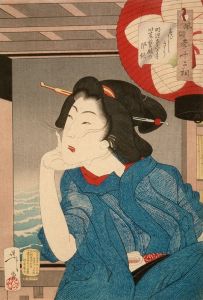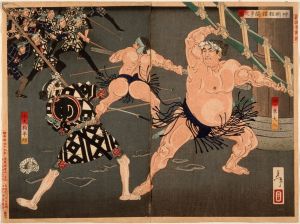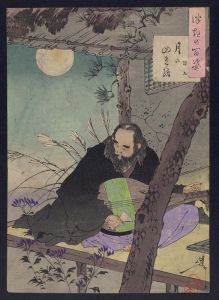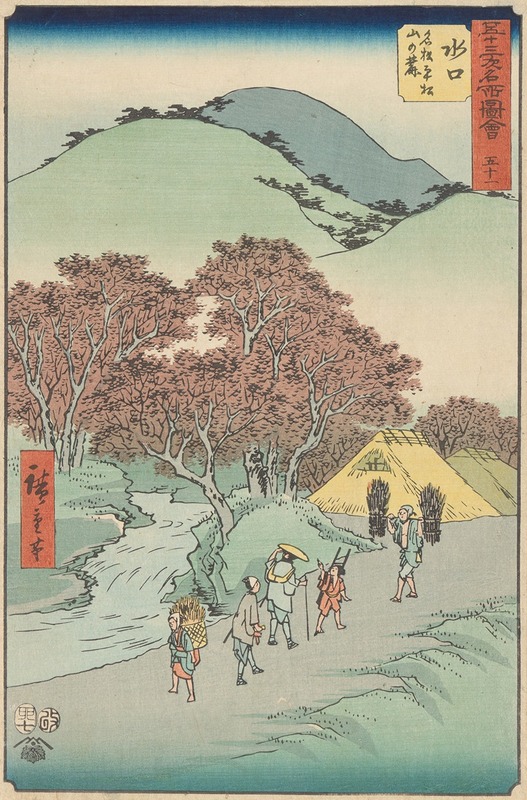
Minakuchi
A hand-painted replica of Andō Hiroshige’s masterpiece Minakuchi, meticulously crafted by professional artists to capture the true essence of the original. Each piece is created with museum-quality canvas and rare mineral pigments, carefully painted by experienced artists with delicate brushstrokes and rich, layered colors to perfectly recreate the texture of the original artwork. Unlike machine-printed reproductions, this hand-painted version brings the painting to life, infused with the artist’s emotions and skill in every stroke. Whether for personal collection or home decoration, it instantly elevates the artistic atmosphere of any space.
Andō Hiroshige, a renowned Japanese ukiyo-e artist of the Edo period, is celebrated for his landscape prints and series that capture the beauty and essence of Japan. One of his notable works is "Minakuchi," which is part of the series "The Fifty-three Stations of the Tōkaidō." This series, created between 1833 and 1834, is among Hiroshige's most famous and depicts the various stations along the Tōkaidō road, a vital route connecting Edo (modern-day Tokyo) to Kyoto.
"Minakuchi" is the fiftieth print in this series and showcases the Minakuchi-juku, one of the post stations along the Tōkaidō. The Tōkaidō road was a significant travel and trade route during the Edo period, and Hiroshige's series provides a visual journey through the landscapes and daily life of the time. Each station in the series is depicted with a unique scene that highlights the local scenery, culture, or activities.
In the "Minakuchi" print, Hiroshige captures a scene that reflects the local industry and culture. The print illustrates a group of women engaged in the process of drying gourd shavings, known as kanpyo, which was a specialty product of the Minakuchi area. The composition is typical of Hiroshige's style, featuring a balanced and harmonious arrangement of figures and landscape elements. The women are depicted in the foreground, diligently working, while the background shows the gentle slopes and natural beauty of the region.
Hiroshige's use of color and line work in "Minakuchi" is characteristic of his approach to ukiyo-e, where he employs a subtle palette and precise lines to convey both the vibrancy and tranquility of the scene. The print not only serves as an artistic representation but also as a historical document that provides insight into the local customs and economy of Minakuchi during the Edo period.
The "Fifty-three Stations of the Tōkaidō" series was highly popular in its time and remains influential today, offering a glimpse into the travel culture and scenic beauty of 19th-century Japan. Hiroshige's work, including "Minakuchi," is celebrated for its ability to capture the ephemeral beauty of nature and the everyday life of people, making it a valuable piece of cultural heritage.
Hiroshige's impact on the art world extends beyond Japan, influencing Western artists such as Vincent van Gogh and Claude Monet, who admired his compositions and use of perspective. "Minakuchi," like many of Hiroshige's works, exemplifies the artist's skill in creating evocative and enduring images that continue to resonate with audiences worldwide.
Overall, "Minakuchi" by Andō Hiroshige is a significant work within the "Fifty-three Stations of the Tōkaidō" series, offering a window into the historical and cultural landscape of Edo-period Japan. Through his masterful depiction of the Minakuchi-juku, Hiroshige not only highlights the local industry but also immortalizes the spirit of the Tōkaidō road and its travelers.





